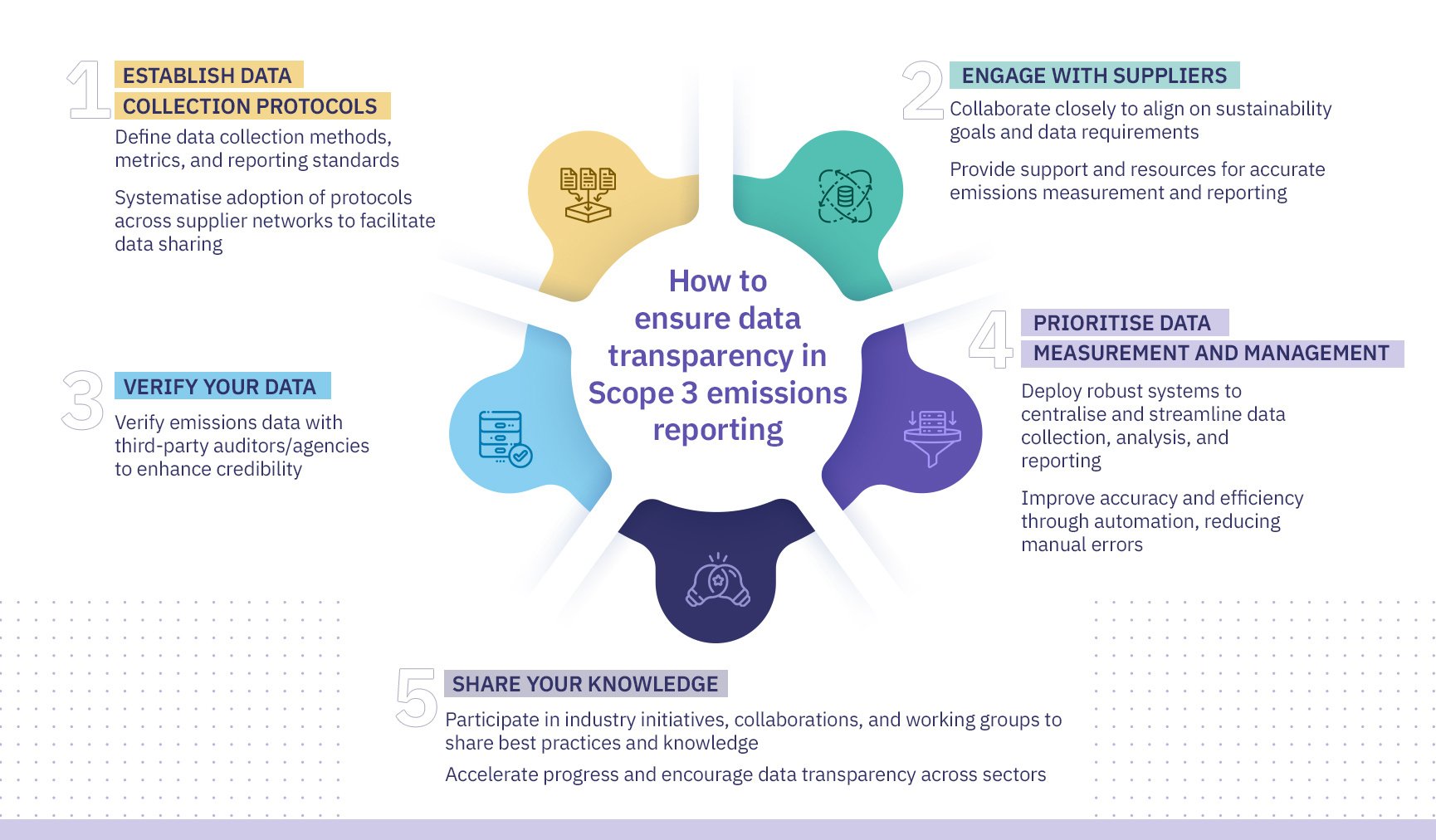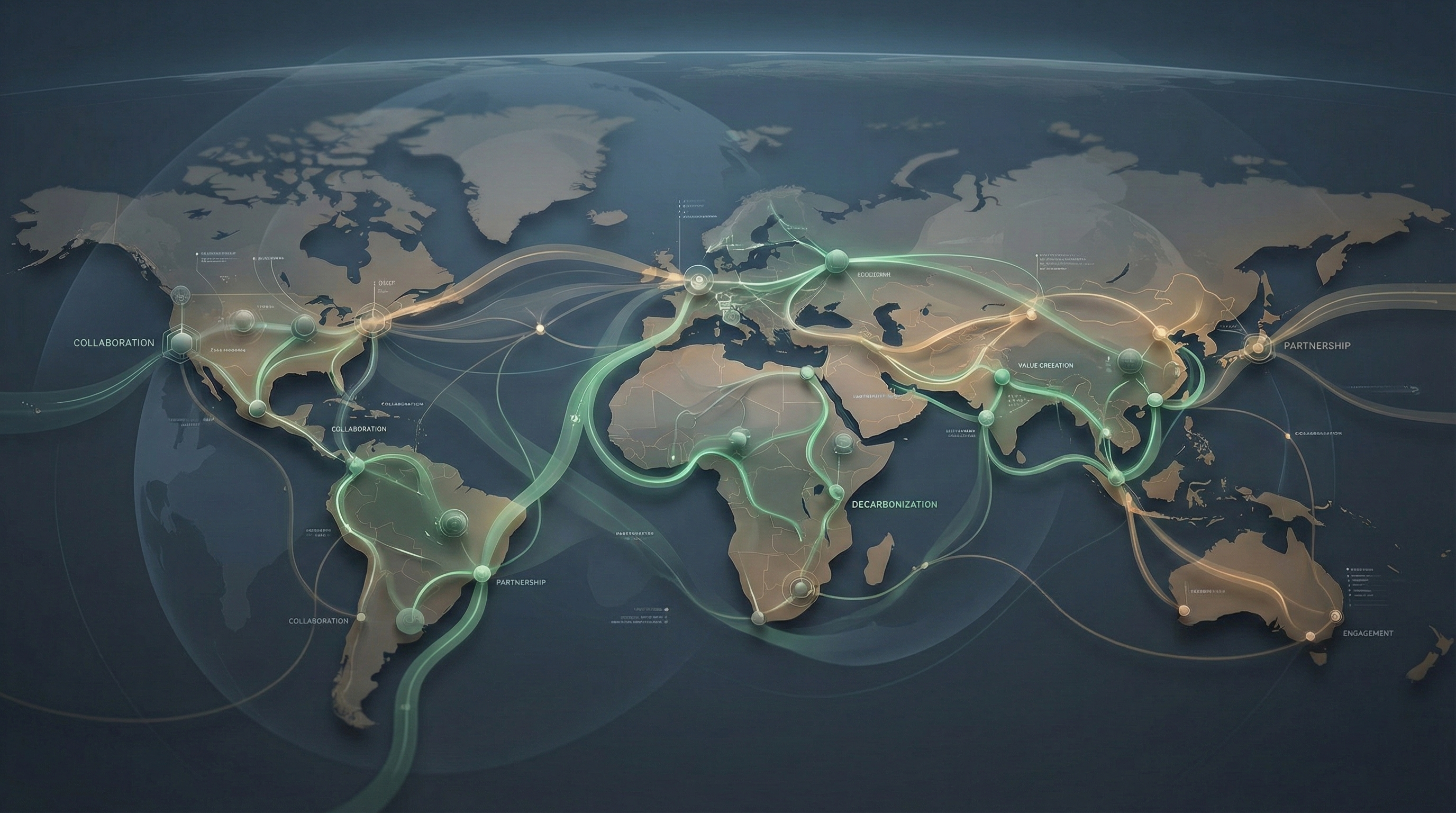Summary
- Transparent Scope 3 data builds credibility, attracts green financing, and meets growing stakeholder and regulatory demands.
- Accurate emissions data enables targeted sustainability actions and improves business decision-making.
- Poor data transparency risks greenwashing, regulatory penalties, and misinformed climate strategies.
Introduction
In today's world, consumers are becoming increasingly concerned about the environmental impact of the products and services they use. There has been a rising demand for companies to provide transparent sustainability data and to take action to reduce their carbon emissions. One such area that has gained significant attention is Scope 3 emissions, which refer to indirect emissions that occur throughout an organisation's value chain. Accurate reporting of Scope 3 emissions is crucial for companies to demonstrate their commitment to sustainability and meet the expectations of environmentally conscious consumers. However, achieving such transparency requires a robust, multi-faceted approach to data measurement, management, and reporting.
Why data transparency is important for Scope 3 emissions reporting
Data transparency plays a vital role in Scope 3 emissions reporting. Data transparency, particularly when it comes to Scope 3 emissions, can give better access to sustainability-linked financing, designed to help with transitioning to clean energy. The prevalence of such schemes among financial institutions, indicate that there is a real, steady pathway for companies looking to keep track of their value chain’s materiality. Companies can find significant value, then, in keeping track of Scope 3 emissions data, as this process strengthens a company's reputation at less cost for stakeholders overall. For example, working with Terrascope, Asia's first CDP Gold accredited software provider, is a strong start towards getting whole-of-business visibility on your company's GHG emissions and applying for financing. Here are several other key reasons why data transparency is crucial:
-
Accountability and credibility
Data transparency in Scope 3 emissions reporting establishes accountability and is an opportunity for businesses to strengthen their credibility. Investors, customers, and other stakeholders increasingly demand accurate emission data to assess how environmentally conscious a company is. Transparent reporting builds trust and strengthens the reputation of organisations committed to addressing climate change. Further, numerous regulatory bodies worldwide have enshrined Scope 3 as a critical part of disclosures – for one, the SEC-proposed rule change in the United States mandates Scope 1 and 2 emissions disclosure for registrants based on materiality. Similarly, the European Union's CSRD requires Scope 3 reporting from 2025, while the UK's SECR policy has been in effect since 2019. -
Informed decision-making
Reliable and transparent data empowers organisations to make informed decisions about their sustainability endeavours. It provides insights into emissions hotspots, identifies areas to implement innovation, and enables the evaluation of different mitigation strategies. This allows for precise identification of areas where sustainability improvements can be made, such as energy consumption, waste generation, and carbon emissions. With accurate data, companies can implement targeted, efficient strategies that can drive meaningful change towards net zero. Granular data can be influential in guiding approaches set out by a mitigation hierarchy that enables companies to set realistic sustainability goals, track progress accurately, and identify trends over time. -
Benchmarking and learning
By prioritising accurate measurement and openly sharing emission data, organisations can learn from each other's best practices and drive continuous improvement. Doing this can also facilitate benchmarking within industries that have significant emissions such as the FLAG sector, and streamline emissions reporting. Transparent reporting encourages collaboration, innovation, and the development of low-carbon technologies. -
Global impact
Data transparency in Scope 3 emissions reporting enables businesses to align their decarbonisation efforts with national and international net zero targets. Accurate data allows organisations to measure their progress towards these goals and implement strategies that contribute to global decarbonisation efforts. By aligning their emissions reductions with broader targets, businesses can play a pivotal role in driving the transition to a low-carbon economy. Additionally, policymakers rely on reliable, disclosed data to make informed decisions and formulate effective emission reduction policies. Transparent reporting supports evidence-based policymaking, enabling a collective response to mitigate climate change.
Challenges in achieving data transparency in Scope 3 emissions reporting
While data transparency is crucial, many companies face challenges in achieving it. Some of the key challenges are:
- Complexity of value chains: Companies often have extensive networks of suppliers, contractors, and business partners, making it difficult to gather reliable data on emissions. Additionally, data collection processes can be fragmented, with business units or subsidiaries using various reporting methods and data formats. This lack of standardisation can hamper data aggregation and transparency efforts.
- Availability and quality of data from external sources: Companies rely on their suppliers and vendors to provide accurate emissions data, but this can be challenging if those partners do not integrate sustainability into their practices or lack the necessary infrastructure and capital to measure and report emissions. Incomplete or unreliable data from external sources can compromise the accuracy and transparency of a company's Scope 3 emissions reporting. Many methods of calculating emissions are based on industry averages and data estimates, which can result in data inaccuracies as well.
The consequences of inadequate data transparency in Scope 3 emissions reporting are severe. Misreporting or underreporting emissions can be perceived as greenwashing, and may also lead to incorrect assumptions about the environmental impact of certain activities or products. This misinformation can result in misguided decisions regarding emissions reduction strategies, investment decisions, and stakeholder perceptions. Inaccurate reporting may also expose companies to reputational risks and legal liabilities. For one, regulations such as the EU’s Green Claims Directive actively penalise companies who make deceptive claims around sustainability. Therefore, organisations must strive for improved data transparency, bearing these consequences in mind.
Best practices for achieving data transparency in Scope 3 emissions reporting
- Establish clear data collection protocols: Clearly define data collection methods, metrics, and reporting standards across the organisation. Encourage suppliers and partners to formalise data practices consistent across value chains to facilitate collaboration and aggregation.
- Engage with suppliers and partners: Build consensus with your suppliers and partners to align on sustainability goals and data requirements. Provide upstream support and resources to help them measure and report their emissions accurately.
- Implement data verification processes: Engage external auditors or verification bodies to review and verify emissions data. Independent, third-party verification adds credibility and enhances transparency. This requirement will soon be in place for several markets around the world, such as Singapore & Australia.
- Invest in data measurement and management systems: Deploy robust data management systems that can centralise and streamline emissions data collection, analysis, and reporting. Automation can improve accuracy and efficiency while reducing manual errors.
- Promote collaboration and knowledge sharing: Participate in industry initiatives, collaborations, and working groups that focus on Scope 3 emissions. Sharing best practices and lessons learned can accelerate progress and encourage data transparency across sectors.
How Terrascope aids accurate and transparent emissions reporting
Terrascope is a comprehensive, smart carbon measurement and management platform tailored towards enterprises working toward their decarbonisation journeys. Our end-to-end decarbonisation platform uses data science, machine learning, and sustainability expertise to help companies accurately and comprehensively measure carbon emissions, as well as fill in gaps in data. It assimilates data from a variety of authoritative sources and across various supply chains, which can be leveraged into actionable insights like sustainability reports. This, in turn, can facilitate data transparency in emissions reporting. Our capabilities have also allowed Terrascope to be recognised as Asia’s very first CDP Gold Accredited Software provider.
For example, our platform can assist with the following:
- Data profiling: The Terrascope platform highlights gaps in data quality, comprehensiveness, and granularity, allowing companies to identify where to focus data collection efforts to improve.
- Carbon driver tree: Terrascope generates granular emissions data, providing clear visualisations of underlying drivers, boundaries and categorisations (e.g. FLAG vs non-FLAG). The expert workflows enable you to tailor a Carbon Driver Tree that aligns with your business or supplier-specific processes.
- Setting reference targets: Terrascope goes beyond the platform by offering collaboration opportunities with our Sustainability Experts and Carbon Data Analysts who are ready to provide guidance to your teams. Businesses can gain future-forward analytics to establish targets aligned with SBTi guidance on reductions, and layer in real-world data to model potential climate risks.
- Reporting and disclosure: The Terrascope platform enables companies to export reports in specific formats, and seamlessly integrates with various reporting platforms through APIs. Companies can even avail of Terrrascope’s unique Activity Lineage feature, which identifies the factors driving year-on-year changes in emissions measurements, uncovering any inconsistencies in approach, data coverage, data granularity, or emissions factors used.
Conclusion
The significance of data transparency in Scope 3 emissions reporting cannot be overstated. It is the bedrock for effective emissions measurement, particularly as it informs decisions made regarding GHG reduction strategies. Transparent reporting also builds a culture of accountability across business functions and also enables companies to align their sustainability efforts with wider national and international net zero targets. Furthermore, accurate and meticulous disclosures empower policymakers with authoritative data which allows them to drive transformative, systemic policy.



